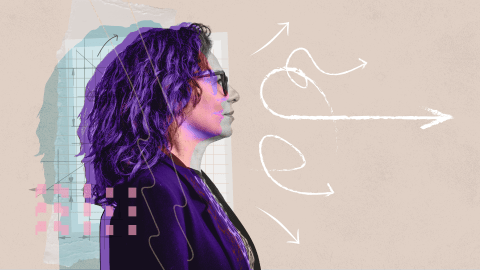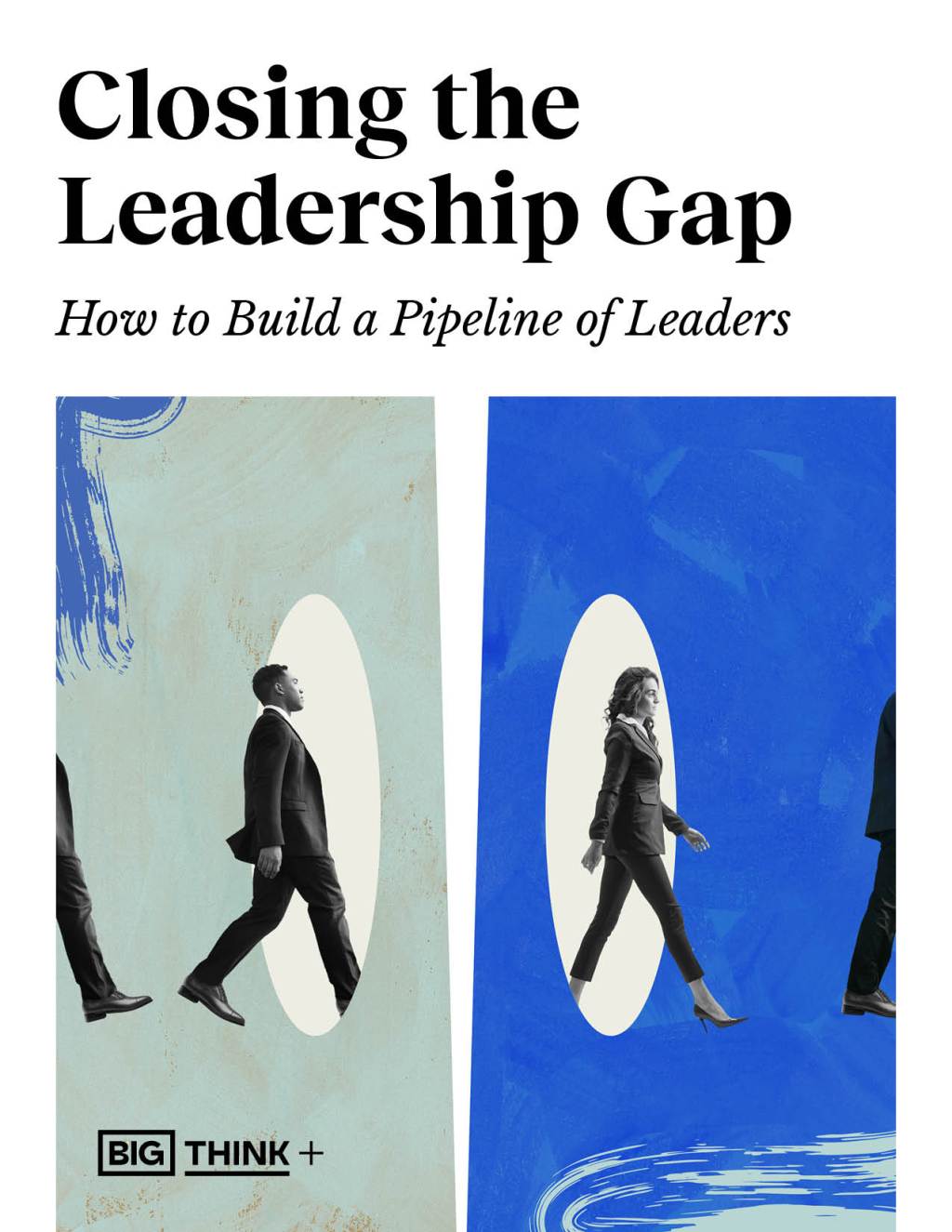Building leaders ready for anything: 4 critical change leadership capabilities

It is difficult to name an organization that hasn’t been affected by significant change in recent years, and the pace of that change shows no sign of decelerating. Organizations continue to struggle with developing strong leaders who are not only adept at managing today’s challenges — whether those are customers, competitors, communities, climate change, or the realities of the post-COVID economy — but also prepared for whatever the future may bring.
Why is change leadership so difficult? Because leaders too often assume that revising policies, incorporating new technology, or communicating updated financial goals will drive the desired results. If it were that simple, there wouldn’t be such a long history of highly touted shake-ups, reorganizations, and innovations now used as case studies for what not to do.
However, the crucial element is people, both within and outside the organization. Their actions, inactions, and reactions can make or break any change initiative. For a transformation to take hold, people need to first understand what the changes are and what they mean for them. They must then modify their behaviors in ways that align with, and help drive, the desired outcomes.
Because of this, a change leader will have to juggle many roles — communicator, influencer, mobilizer, and team-builder, to name a few.
Critical change leadership capabilities
Many capabilities contribute to effective change leadership, but four stand out as vitally important at a macro level. To manage change successfully, leaders will need to be able to:
- Employ perspective and critical thinking to challenge their assumptions and consider new approaches.
- Understand their organization and use strategic and organizational agility to get things done.
- Communicate vision and purpose to each level of the organization.
- Drive execution to sustain momentum and bring the vision to fruition.
Employ perspective and critical thinking
Effective leaders possess the ability to observe situations from multiple angles and imagine how actions or scenarios might play out. They prefer to gain a fuller understanding of a situation by exploring multiple routes rather than going with the first or easiest option available. That may involve seeking information from additional sources, researching what has or hasn’t worked in the past, testing assumptions before formulating an approach, and weighing all available facts and evidence objectively.
Perspective and critical-thinking skills are developed by building a diverse repertoire of experiences, exploring a broad range of ideas and viewpoints, and exposing oneself to unfamiliar situations and tasks. While an individual’s motivation to improve and practice this capability is critical, there are ways for an organization to support their development.
Skill development ideas
- Arrange a temporary assignment to an unfamiliar part of the organization.
- Set up lunch meetings with counterparts from different functions around the organization to learn more about what they do.
- Become involved in multifunctional project teams focused on a new or unresolved business challenge.
- Actively seek out views and insights from outside the organization through podcasts, videos, readings, and formal learning opportunities.
Use strategic and organizational agility
Successful change doesn’t result from shots in the dark, nor does it require foreseeing the future in a crystal ball. It instead requires agility. To be strategically agile, a leader must have insight into their organization, acquire a broad understanding of its strengths and areas of opportunity, and be able to formulate and articulate future possibilities to others.
Organizational agility goes hand-in-hand. To have a hope of engaging others around an idea or recommendation, an effective leader first has to understand how the organization works. They must know who the decision-makers, influencers, and gatekeepers are. They should also understand the risk appetite and be aware of the external and internal drivers that might influence any decisions.
Both of these capabilities require comfort with ambiguity as well as personal resilience. Advocating a future course of action will, by its nature, entail reliance on incomplete information. If circumstances change, a change in plans may be required. And circumstances can always change again.
The most capable leaders learn to rely on their ability to persevere, at the same time influencing others to remain supportive of the direction.
Skill development ideas
- Developing strategic agility takes time and reflection. To the extent possible, and depending on manager level, delegate functional day-to-day tasks to team members to free up time for strategy-related work.
- Establish mentoring relationships between senior and emerging leaders to encourage candid discussions of ideas, concerns, and organizational insights.
- Explore organizations such as the Conference Board for exposure to a broad spectrum of issues and perspectives.
- Take part in small-group coaching with others from different functions to foster listening, sharing of perspectives, and peer mentoring.
Communicate vision and purpose
One of the most powerful motivators for employees is engagement. A 2023 report from Gallup found that work engagement declined for the first time in a decade. However, several organizations were able to reverse that trend even while dealing with difficult circumstances through a focus on strong leadership, culture and values, and clearly communicated expectations.
Successful change leaders have the capability not only to strategize about the future but to transform that strategy into a clear and compelling vision for every employee — regardless of their level or occupation. They know to what extent their people feel connected to their coworkers, have opportunities to learn and grow, feel supported by their managers, and are inspired by their organization’s direction.
This requires an extensive knowledge of the workforce, the ability to tailor messaging to different groups and individuals, and consistent modeling of what the new thinking and behaviors look like. It also requires the ability to anticipate and manage resistance.
Skill development ideas
- Lead a team tasked with integrating a new business unit.
- Conduct informal discussions with a broad spectrum of employees to learn their reaction to, and ideas about, a proposed major change.
- Seek out role models with a reputation for effectively managing vision and purpose.
- Gain insights from external resources, leaders, and speakers.
Drive execution
Many great strategies have failed to live up to their promise due to flawed execution. Unfortunately, the patience of the internal workforce and external marketplace can be limited.
For a leader, effective execution entails making tough decisions, often with incomplete information and under tight deadlines. With so much at stake for the change leader, from reputational risk to the expectation of achieving desired outcomes, it can be easy to fall into the trap of micromanagement.
However, it’s critical to remember that successful change efforts depend on actions and engagement by the broader organization. Employees want to understand the new direction, they want a part to play, and they want to be recognized for their contributions. To that end, leaders must delegate responsibilities effectively, collaborate with peers and leadership to ensure alignment, and persevere through the inevitable roadblocks, surprises, and misfortunes.
Skill development ideas
- Assign a project with a tight deadline to a group.
- Build a multi-functional team to tackle an important business issue.
- Manage an ad hoc, temporary group of resisting employees through an unpopular change project.
- Take advantage of an executive coach for help in gaining personal insights, working through obstacles, and exploring plans and actions with a neutral party.
Final thoughts
As the past few years have shown, the unexpected is to be expected. Future-ready leaders must be well-rounded and prepared. Organizations around the world are faced with the dual challenge of recruiting and retaining a robust leadership bench while working to ensure those individuals are developing the future-focused capabilities the organization needs.
The development of change leadership skills is a joint responsibility of the individual and the organization. While individuals need to be proactive in seeking out opportunities, the organization must provide the foundation to help develop those skills. Questions that senior leadership and the L&D community should consider:
- Does that foundation promote systems thinking, encourage curiosity and adaptability, and reward reasonable risk-taking?
- To what extent is leadership development actively incorporated into job experiences, coaching, and feedback while also being supplemented by formal learning?
- How involved are senior leaders in role modeling and recognizing change leadership behaviors and accomplishments?
Developing a cadre of future-ready leaders is a whole-of-organization effort. As evolving circumstances push organizations to transform their business models, adapt to an increasingly diverse and demanding workforce, and build resilience for what is still to come, the investment in building a deep bench of leaders prepared for ongoing change will help ensure their future is successful and sustainable.
Learn More About Big Think+
With the most Fortune 500 executives, Ivy League academics, and best-selling authors of any content provider, Big Think+ learning experiences are designed to guide, inspire and accelerate your leaders. Visit our leadership development page to watch sample lessons and explore how Big Think+ could ignite leaders across your organization. We think you’ll quickly realize the game-changing impact our leaders will have on yours.





